According to the recent survey from the World Health Organization (WHO), cardiovascular disease causes 17.3 million deaths each year globally, ranking No.1 in the leading causes of mortality. To make it worse, traditional physician/hospital heart disease therapies are far from satisfactory for most cardiovascular-disease patients (especially for senior citizens suffering from the long-term heart attacks) as hospital treatment requires costly physical care, limits the patient’s daily activities and occupies expensive medical facilities. Thus, personalized Body Sensor Network (BSN)-based wearable devices for whole-day ECG (electrocardiogram) signal monitoring and abnormality detection in a free-living environment have attracted much considerable interest recently.
Researchers from Shenyang Institute of Automation (SIA), Chinese Academy of Sciences, propose a novel approach to ECG signal filtering with integral-coefficient-band-stop (ICBS) filter and to ECG signal classification based upon two-layered Hidden Markov Models.Unlike the traditional techniques which aim at collecting and processing the ECG signals with the patient being still, lying in bed in hospitals, this algorithm is intentionally designed for monitoring and classifying the patient’s ECG signals in the free-living environments. The patients are equipped with the wearable devices that are capable of detecting the ECG abnormal signals within 24 hours a day, which facilitates the real-time heart attack detection. The framework of the real-time ECG transmission and processing is shown in Figure 1.
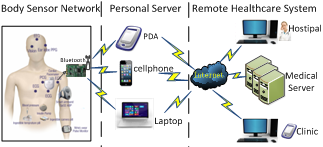
Fig.1 Framework of Real-time ECG transmission and processing in BSN. (Image provided by ZHANG Yinlong et.al)
In ECG signal preprocessing, the proposed ICBS filter effectively removes the common ECG noises: baseline wander and power-line interference while maintaining the low computational time by replacing the multiplications and divisions with shift operations on ECG filtering hardware.

Fig. 2 Simulation waveforms of our proposed ICBS filter. (a) ECG waveform baseline wander removal
(b) ECG waveform power-line interferenceremoval (Image provided by ZHANG Yinlong et.al)
The two-layered HMM algorithm for ECG feature extraction and classification is designed. In the first layer, the ECG signal waveform segmentation and feature extraction are conducted based upon local maximum detection and non-maximal constraint.The typical ECG features such as R-R intervals and P-R segments are selected after HMMIdecoding. Then these extracted features are chosen as observation symbols in HMMII to classify the ECG signal as normal or abnormal in the second layer. The ECG abnormality outcomes are shown in Figure3. The ECG signal sampling circuit board and classification platform are designed as shown in Figure 4 and Figure 5.
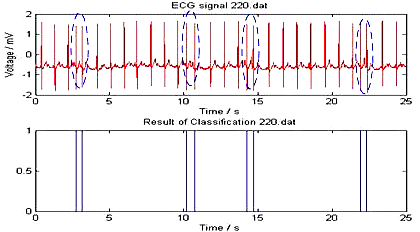
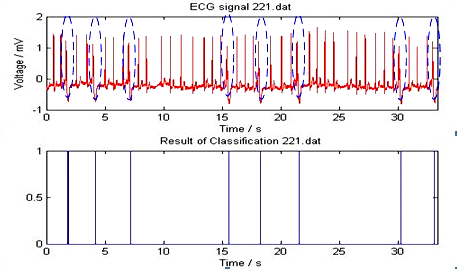
Fig. 3 Abnormal ECG classification results. The upward waveforms are the ECG data from MITBIH database 220.dat and 221.dat, where the abnormal signals are labeled with the blue dashed circle and the downward waveforms are the detection results. (Image provided by ZHANG Yinlong et.al)
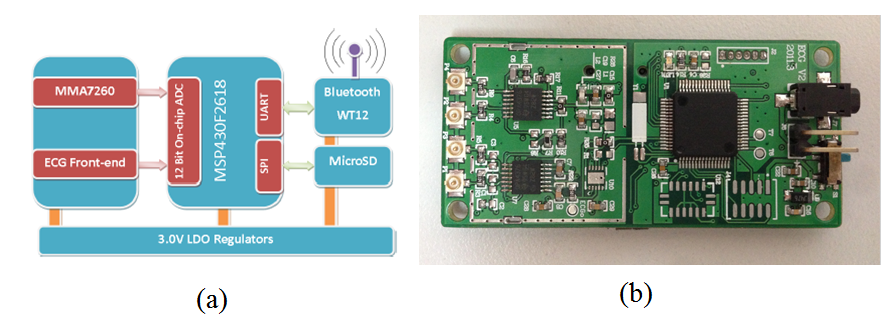
Fig. 4 Diagram of the ECG sensor node and ECG circuit board (Image provided by ZHANG Yinlong et.al)
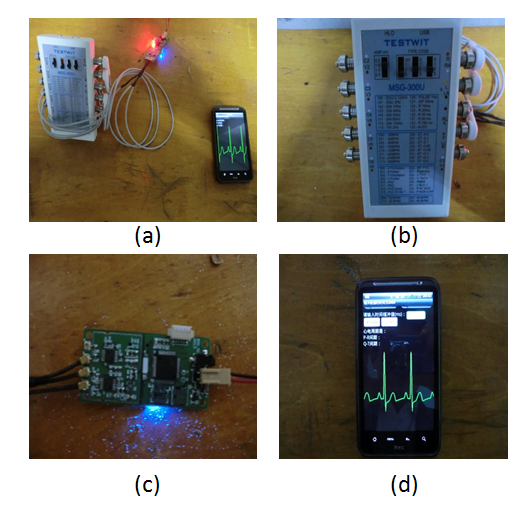
Fig. 5(a) The process in classifying ECG signals; (b) ECG signal generator device: MSG-300U; (c) ECG signal sampling and filtering board; (d) The ECG waveforms real-time displayed in cellphone screen (Image provided by ZHANG Yinlong et.al)
This work was published on the journal of Sensors, Volume 14, March, 2014, 5994-6011. It was partly supported by the National Natural Science Foundation under grants 61172145, 61333019.
CONTACT:
Doctor Yinlong Zhang
Shenyang Institute of Automation, Chinese Academy of Sciences
Email: zhangyinlong@sia.cn